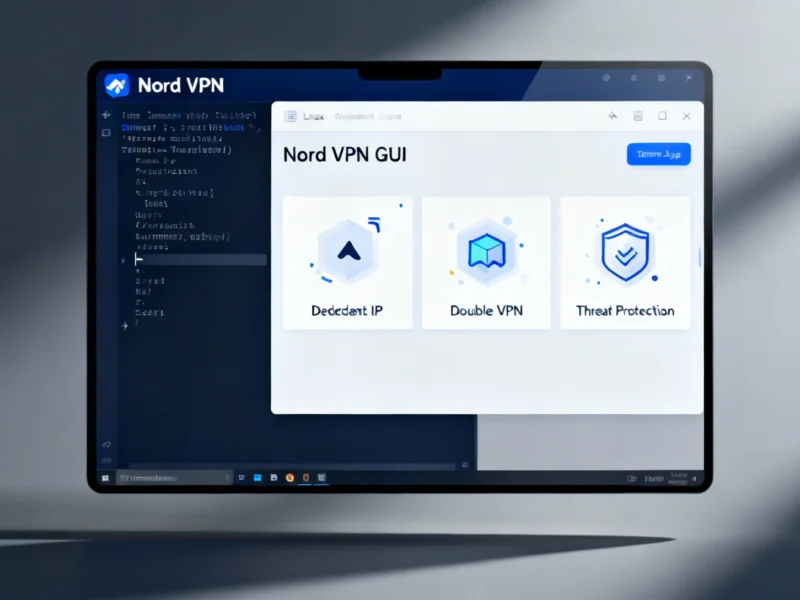NordVPN’s Linux GUI Goes Open Source
NordVPN has made its graphical user interface for Linux applications open source, according to recent company announcements. The development follows the initial release of the Linux GUI back in May, which provided users with an alternative to the traditional command-line interface for the first time.
The company’s decision to embrace open-source software principles for both its CLI and GUI applications signals a strategic shift toward transparency, sources indicate. The NordVPN Linux application code is now publicly available on GitHub, allowing security researchers and developers to inspect, audit, and contribute to the project.
User Growth Drives Open Source Move
Analysts suggest that the open-source decision was influenced by significant user adoption metrics. According to reports from NordVPN’s official blog, daily active devices running the Linux GUI grew by more than 70% following its initial release. This substantial growth reportedly demonstrated that users “value both usability and security,” the company stated.
The original GUI release included several premium features that eliminated the need for terminal commands for most users. Key functionalities such as Dedicated IP, Double VPN, and Threat Protection via DNS filtering became accessible through the graphical user interface, making Linux VPN usage more approachable for non-technical users.
Simplified Installation Through Snap
Following through on promises made during the initial GUI launch, NordVPN has updated its Snap package to include the graphical interface. The installation process has been streamlined to a single terminal command: sudo snap install nordvpn. This approach lets systems handle updates automatically, though users still need to complete initial login and connection through the terminal.
While making client applications open source, NordVPN maintains that sensitive infrastructure remains proprietary. The company’s core VPN infrastructure, authentication systems, and other back-end services continue to operate as closed-source systems, according to the report.
Windows on ARM Reaches Feature Parity
In related development news, NordVPN’s native application for Windows on ARM devices has achieved feature parity with the standard Windows version. The native client, which has been available for approximately one year, now includes previously missing features like “Threat Protection Pro” and split tunneling capabilities.
The update brings improved performance and battery life compatibility to devices including the latest Surface Pro series, Samsung Galaxy Book4 Edge, Lenovo Flex 5G, HP Elite Folio, and Acer Spin 7. Split tunneling functionality allows users to selectively route application traffic through the encrypted VPN tunnel or directly to the internet, providing greater flexibility for power users.
Industry Context and Broader Trends
The move toward open-source VPN clients aligns with broader industry trends toward transparency in security software. Meanwhile, other sectors are experiencing similar shifts, as evidenced by record employee retention rates in technology fields and unconventional business strategies emerging across the tech landscape.
Economic factors continue to influence technology development, with bank earnings boosting markets amid AI infrastructure investments. International trade considerations also remain relevant, particularly as tariff threats face economic realities and emerging markets like Indonesia target significant GDP growth through digital transformation initiatives.
This article aggregates information from publicly available sources. All trademarks and copyrights belong to their respective owners.



